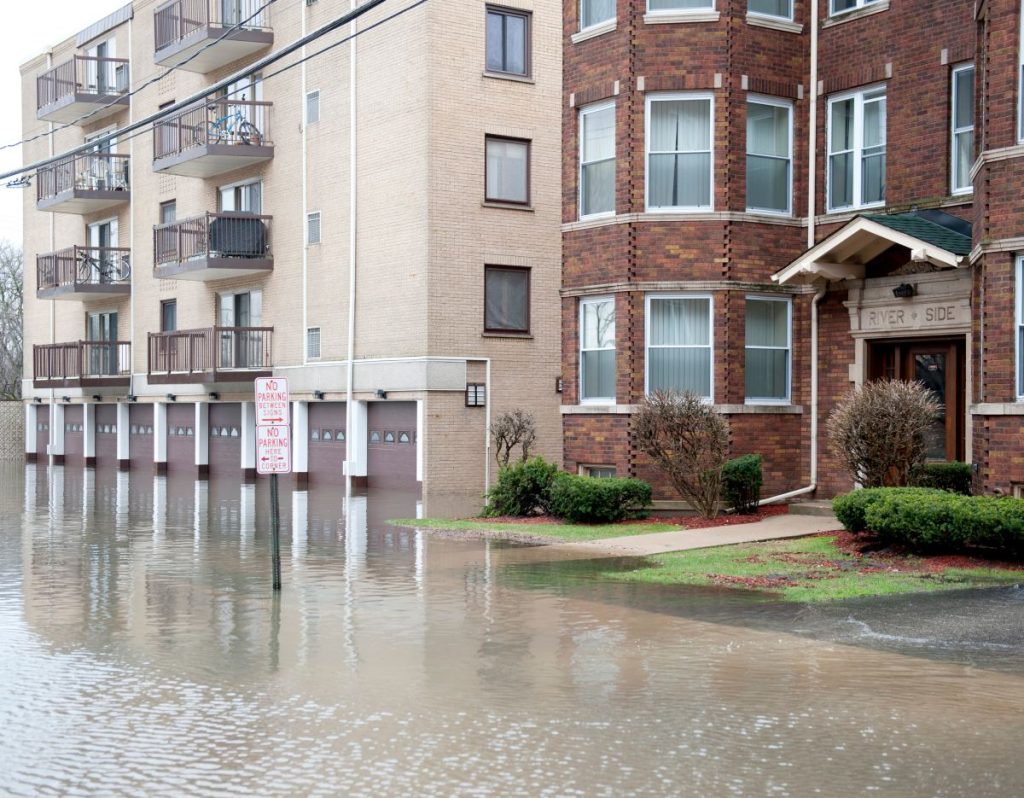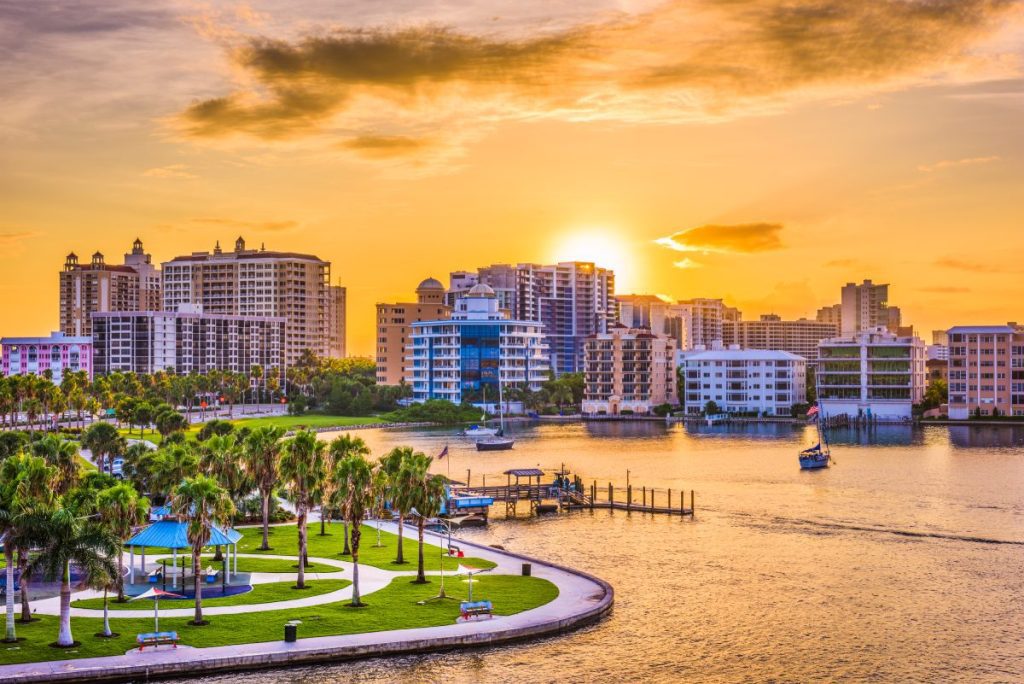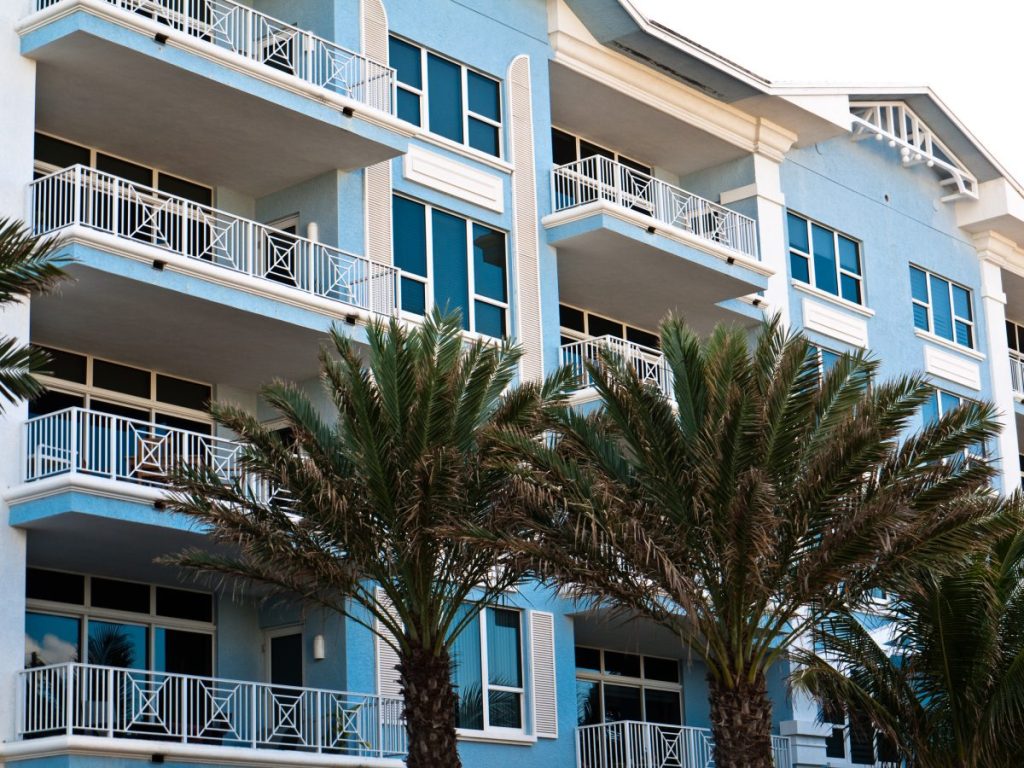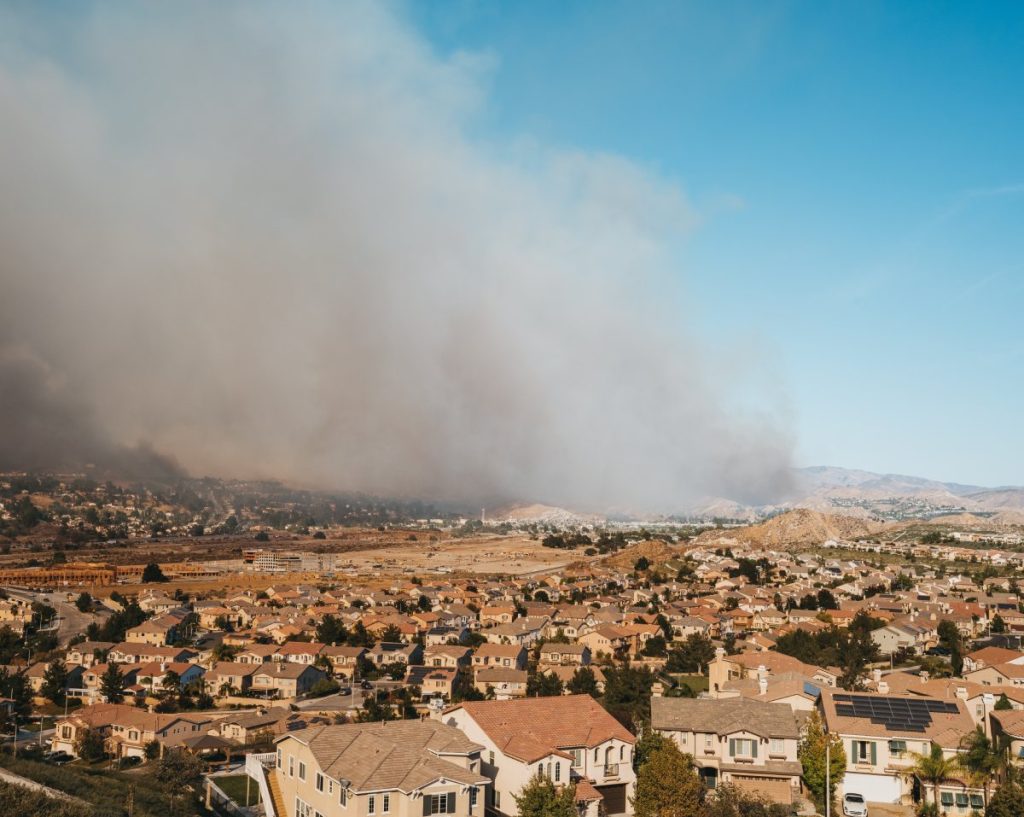Flood insurance for commercial property is a vital tool to protect your business from disaster. Natural disasters, such as floods, can happen anywhere, and even one inch of floodwater can cause thousands of dollars in damage. But there are lots of things policyholders don’t know about how business property flood insurance works and what it covers.
This blog explains commercial flood insurance, offers five need-to-know pieces of advice to remember when you’re purchasing your policy, provides real-world claim examples, and includes a checklist to help you choose the right coverage options.
What Is Commercial Flood Insurance?
Commercial flood insurance is designed to protect your business—both the physical location and its contents—from flood damage. According to the Federal Emergency Management Agency (FEMA), a flood is a general and temporary condition where two or more acres of normally dry land or two or more properties are inundated by water or mudflow.
These policies are typically not included in general commercial property insurance and must be purchased as separate policies. You can purchase flood insurance either through a National Flood Insurance Program (NFIP) provider or a private insurance company. The NFIP is a federal government program managed by FEMA and delivered to the public by a network of more than 50 insurance companies (known as Write-Your-Own or WYO companies) and the NFIP Direct program.
What Commercial Flood Insurance Covers
Commercial flood insurance includes two types of coverage options: one for the physical location where you operate your business (building coverage) and another for the contents within it (personal property or contents coverage). The NFIP’s General Property Form offers commercial policyholders up to $500,000 in building property coverage and up to $500,000 in personal property coverage.
Building coverage typically includes:
- The building’s foundation, walls, staircases, and anchorage systems
- Fuel tanks, well tanks, and pumps
- Plumbing and electrical systems
- Furnaces and water heaters
- HVAC systems and septic systems
- Windows
- Permanently installed cabinets, paneling, and bookcases
- Permanently installed carpeting
- Appliances like refrigerators and stoves
- Solar equipment
Contents coverage typically includes
- Furniture
- Clothing
- Curtains
- Portable and window unit air conditioners
- Carpets not included in building coverage, such as carpeting installed over wood floors
Common Exclusions in Commercial Flood Insurance Policies
While commercial flood insurance can cover a wide range of risks, certain things are typically excluded from policies. These exclusions are critical for any business owner to understand.
Typical exclusions include:
- Damage from moisture, mildew, or mold that you could have prevented
- Sewer or drain backup, unless the backup was directly caused by flooding
- Items stored outside your building, such as landscaping, fences, or detached signs
- Cars, trucks, and other business vehicles
- Loss of income or profits due to business interruption (see our tips below; you may need separate business interruption insurance to cover that)
- Currency, precious metals, securities, and important documents, such as deeds and contracts (valuable papers), are usually excluded or have limited coverage.
- Property in transit or belonging to customers, vendors, or guests that is left on your premises.
Real-World Examples of Commercial Flood Claims
Understanding how claims work in practice can help you prepare. Here are two common scenarios that commercial property owners face.
Example 1: Business Interruption Claim Denied Due to Wind and Flood
A common issue after a major storm is determining the exact cause of damage. In one instance, a policyholder’s business property was severely damaged by Hurricane Florence, resulting in a loss of business income. The insurance company accepted coverage for the wind damage but denied the flood damage claim. Crucially, they also denied the business interruption claim, citing an “anti-concurrent causation” clause. This clause states that if a loss is caused by both a covered event (such as wind) and an excluded event (such as flood), the entire claim may be denied.
In states that enforce this language, the business owner may need to hire an engineer to determine which peril was the primary cause of the loss. This highlights the importance of understanding every clause in your flood insurance policy, especially how different types of damage are handled.
Example 2: Recovering Business Income Losses Without Flood Insurance
Many businesses in the Northeast had their business interruption claims denied after Hurricane Sandy because they didn’t have specific flood insurance coverage. However, other avenues for coverage often exist. For example, when mandatory evacuation orders are issued by a civil authority, some policies provide coverage for business income loss, even if the property itself didn’t suffer direct physical damage.
This “Civil Authority” coverage can be a lifeline. Similarly, “Ingress/Egress” coverage might apply if access to your property was blocked by a covered peril. A notable case, Fountain Powerboat v. Reliance Insurance Company, affirmed that physical damage to the insured property isn’t always required to trigger business interruption coverage when access is prevented. If your business is affected by an evacuation or access restrictions, review your commercial property policy to determine if it includes these specific coverage options.
Checklist: What to Look for in Your Commercial Flood Insurance Policy
When purchasing or reviewing your business property flood insurance, use this checklist to ensure you have the proper protection.
- Coverage Limits: Are the building and contents coverage limits high enough to cover your property’s full replacement value? The NFIP maximum might not be enough.
- Covered Perils: Does the policy clearly define what types of flood events are covered (e.g., overflow of water, flash flooding, storm surge)?
- Exclusions: What exactly isn’t covered? Pay close attention to exclusions for mold, business interruption, and outdoor property.
- Business Interruption Coverage: Does the policy provide coverage for lost income if your business is forced to close due to flood damage? This is often a separate policy or rider.
- Replacement Cost vs. Actual Cash Value: Will the policy pay the full cost to replace your property (RCV) or only its value after depreciation (ACV)? This makes a huge difference in your payout.
- Deductibles: What are the deductibles for building and contents coverage? A higher deductible lowers your premium but increases your out-of-pocket cost during a claim.
- Waiting Period: Take note of the 30-day waiting period that typically applies to NFIP policies before coverage becomes effective. Don’t wait until a storm is forecast.
- NFIP vs. Private Insurance: Compare the coverage options, limits, and exclusions between the NFIP and private flood insurance policies. Private options may offer broader coverage.
- Claims Process: Understand the steps for filing insurance claims. What documentation is required, and what are the deadlines?
How Much Does Commercial Flood Insurance Cost?
The cost of commercial flood insurance varies significantly depending on several factors. Insurance premiums can range from a few hundred dollars per month to several thousand. Key factors that influence the pricing and underwriting process include:
- Location: The biggest factor is your property’s risk of flooding. If you’re in a high-risk flood zone as shown on a FEMA flood map, your premiums will be higher. You can check your risk on Floodsmart.gov.
- Property Size and Value: The larger and more valuable your property, the higher the cost.
- Coverage Amount and Deductibles: Higher coverage limits increase premiums, while higher deductibles can lower them.
- Building Characteristics: Factors such as the elevation of your building’s lowest floor, its foundation type, and the location of utilities (HVAC, water heaters) all impact the rate.
5 Tips To Help Make Sure You’re Covered
After every major flood event, I’m contacted by at least one business owner or condominium owner who suffered flood damage, filed their claim with their NFIP¹ Flood Insurance Company (Allstate, Hartford, Wright Flood, Farmers, FEMA, etc.), and was then told by either the insurance company or the adjuster that their flood insurance policy didn’t cover all of the buildings or structures on the property. The business owners are enraged because they were under the impression that all buildings on the property were covered.
Depending on the circumstances and facts of each case, there may be legal recourse against the agent and/or company who incorrectly procured, wrote, and issued the flood insurance policy. However, it’s better to be safe than sorry and ensure that your business or commercial property has the proper flood insurance coverage before disaster strikes.
To ensure that your business or commercial property is adequately covered, here are a few important tips to keep in mind when obtaining coverage on an NFIP flood policy.
1. Only One Building Is Covered Per Policy
This is the big one. Many commercial property owners do not realize that the General Property Standard Flood Insurance Policy (SFIP) only covers one building/structure on the property. The General Property SFIP states in bold, “Only one building, which you specifically described in the application, may be insured under this policy.”²
This means that if there are multiple buildings or structures on the commercial property that require flood insurance coverage, a separate policy must be obtained for each building or structure. Each building structure must have its own flood insurance policy for it to be covered.
2. The NFIP’s Maximum Flood Insurance Coverage for a Commercial Property Is $500,000 Per Building Structure
As mentioned above, the NFIP allows for up to $500,000 in flood insurance coverage for each individually insured building structure, as well as up to $500,000 in coverage for personal property or business contents within the covered building structure.³
If you believe that your commercial property building(s) need more than $500,000 per building in flood coverage, contact an insurance agent to seek additional flood insurance coverage through a private or excess flood insurance policy.
3. NFIP Flood Insurance Doesn’t Cover Business Interruption
NFIP flood insurance policies do not cover business interruption, lost business profits, or other similar losses. If you need or want flood insurance coverage for those damages, contact your insurance agent or broker to help you obtain coverage for those items as related to flood damage.
4. Consider a Scheduled Building Policy
For commercial property owners with multiple building structures at a single location, a Scheduled Building Policy may be an option for flood insurance coverage.
Scheduled Building Policies aren’t frequently utilized in the NFIP flood insurance realm, but they are available to cover anywhere from two to ten separate building structures under one policy. However, the policy declaration page will require the designation of a specific amount of insurance coverage for each individual building. All buildings must have the same ownership and property location to qualify for this type of policy. I’ve seen these utilized before by school districts.
The policy declarations page(s) will include a list or schedule that delineates each building covered with the amount of insurance coverage for that building.
5. NFIP Isn’t the Only Option for Flood Insurance
Many commercial property owners and homeowners mistakenly believe that their only option for flood insurance coverage is through an NFIP policy (either written by FEMA or a Write-Your-Own (“WYO”) Insurance Company such as Allstate, Hartford, Wright Flood, Farmers, American Bankers, etc.).
Generally, NFIP flood insurance is not the only option, and it is rarely the best option for commercial property. NFIP flood policies provide extremely limited coverage. They don’t cover anything outside the four walls of the building; they are “direct-loss” policies, meaning they only cover flood damage directly touched by flood waters; and they have very limited recourse in the event the claim is not handled correctly (you can’t sue the adjusters, or seek any damages for their bad behavior). Adjusters have limited oversight and little incentive to properly address the claim.
There are, of course, many claims professionals who properly handle claims; nonetheless, there are plenty who do not. Ultimately, many private flood insurance companies offer broader coverage in the event of a flood.
As always, it’s important to know your options and to verify that the flood insurance coverage you need is in fact put in place. We always recommend consulting a knowledgeable insurance professional for assistance with these matters.
Further Resources on Insurance Coverage Law
Navigating the complexities of insurance claims can feel overwhelming. Whether you’re facing unpaid claims or simply filing for the first time, our eBooks equip you with the crucial information you need to advocate for yourself with confidence.
- Filing A Property Insurance Claim
- Insurance Company Response Time
- What To Do When You Have a Denied/Underpaid Claim
- Wildfire Claims
- Flood Claims Handbook
- More Information on Hurricane Deductible and Policy Limits
- Condominium Hurricane Preparedness
Why Merlin?
Are you fighting an insurance company that won’t pay up on claims? With nearly 40 years of practice and $2 billion in recovered claims, our team stands by your side to ensure you can face any insurance challenge with confidence. Contact us today for a consultation, or read more about how we’re your trusted advocate.
FAQs About Commercial Flood Insurance
Why Is Flood Insurance So Expensive?
If your flood insurance premiums are particularly expensive, the most likely contributing factor is location. High-risk zones, such as those near coastlines, rivers, or other areas with a history of flooding, are always charged significant premiums.
But there are other reasons why flood insurance is costly. Floods can cause catastrophic damage. Unlike a small fire that might damage one room, floods often impact an entire structure and its contents, leading to very costly repairs or even total replacement. And since most flood insurance is purchased through the NFIP, the market for fully private flood insurance is relatively small, meaning there isn’t a lot of competition between insurers to drive down prices.
Do Commercial Loans Require Flood Insurance?
Yes, if your commercial property is located in a designated high-risk flood area (a Special Flood Hazard Area) and you have a mortgage from a federally regulated or insured lender, you are required by law to purchase flood insurance.
To file a claim for a flood loss, you should immediately contact your insurance agent or company. Document all the damage with photos and videos, separate damaged property from undamaged property if possible, and prepare an inventory of lost items. Your insurer will assign an adjuster to assess the damage. You will need to submit a signed and sworn Proof of Loss form within 60 days of the flood.
How Can I Reduce My Commercial Flood Insurance Premiums?
There are several different ways you can try to lower the cost of your commercial flood insurance premiums. First off, if you’re building a property or looking for a new one, find one that’s built above Base Flood Elevation (BSE) (i.e., the elevation that flood waters are expected to reach or exceed during a 100-year flood). You can mitigate risk by elevating critical machinery and equipment (such as HVACs and hot water systems) to a higher floor, installing flood openings in walls to equalize pressure during a flood, and using flood-resistant materials. You can also choose a policy with a higher deductible; you’ll pay more out of pocket if a flood occurs, but you’ll reduce your monthly premiums.
Can Flood Insurance Only Be Purchased through Private Commercial Insurance Companies?
Commercial property owners and condominium property owners can procure flood insurance through the NFIP or one of its Write-Your-Own (“WYO”) Insurance Companies (Allstate, Hartford, Wright Flood, Farmers, American Bankers, etc.). Unfortunately, NFIP Flood insurance policies have very strict limitations and constraints, as discussed more below, and it may be necessary or preferable for some commercial property owners to purchase additional or supplemental flood insurance coverage through a private flood insurance company or purchase the entire flood insurance coverage through a private flood insurance company.
What is the FEMA 80% Rule?
FEMA’s 80% rule states that property owners must insure their property for at least 80% of its value, or up to the maximum building coverage limit—that’s $250,000 for homes and $500,000 for commercial property—whichever is less. The value of flood damage is based on either Replacement Cost Value (RCV) or Actual Cash Value (ACV).
What’s the Difference between NFIP and FEMA?
The NFIP is a federal program administered by FEMA. Still, it is delivered to the public through a network of over 50 insurance companies (as well as by NFIP Direct).
¹ National Flood Insurance Program (“NFIP”) is a federally backed program, managed by FEMA, that allows qualified property owners to purchase flood insurance coverage: https://www.fema.gov/national-flood-insurance-program.
² General Property Standard Flood Insurance Policy at pp. 2; https://www.fema.gov/sites/default/files/2020-05/F-123_GeneralProperty_SFIP_102015.pdf.
³ National Flood Insurance Program Summary of Coverage




